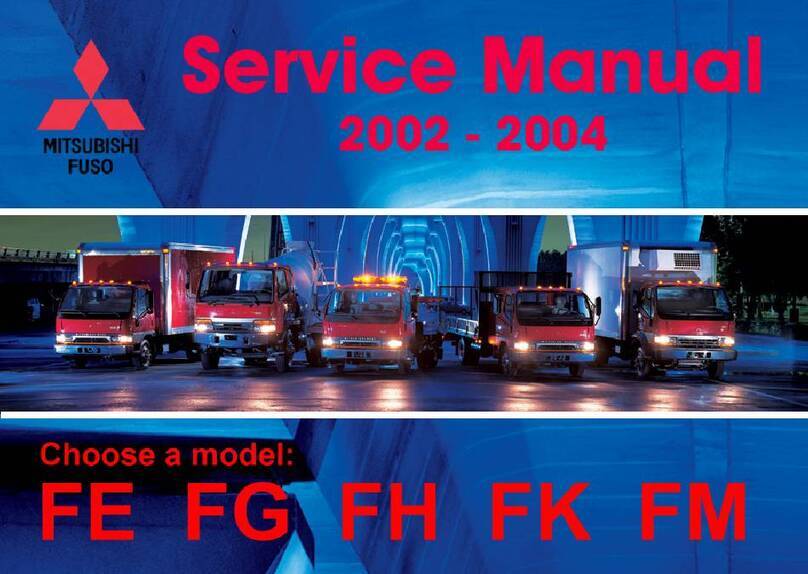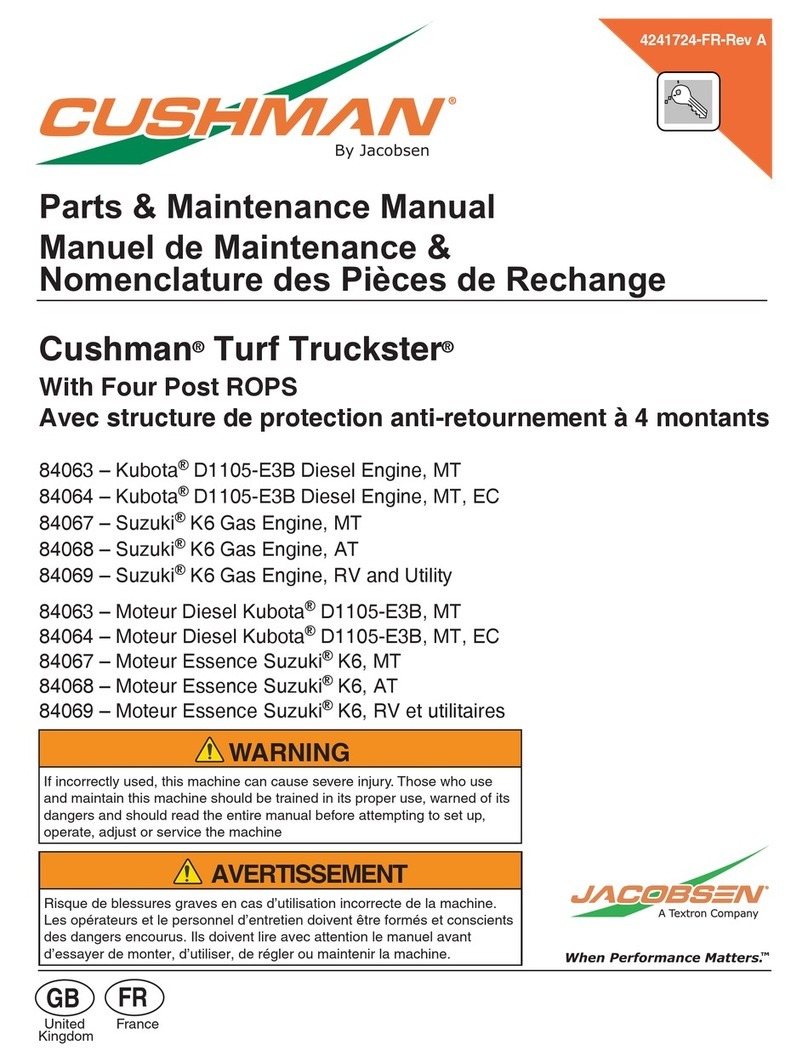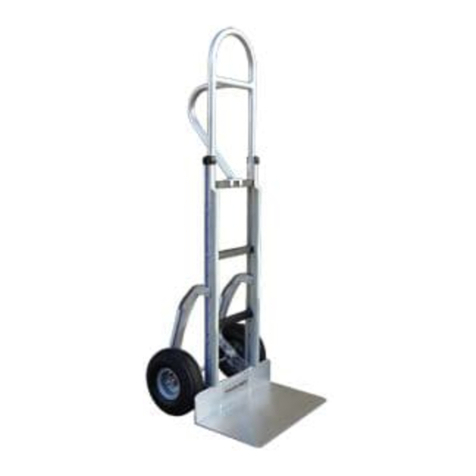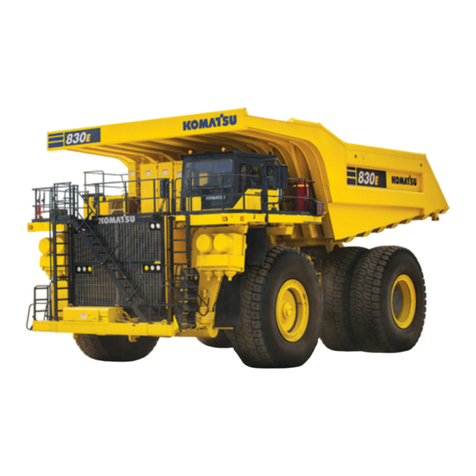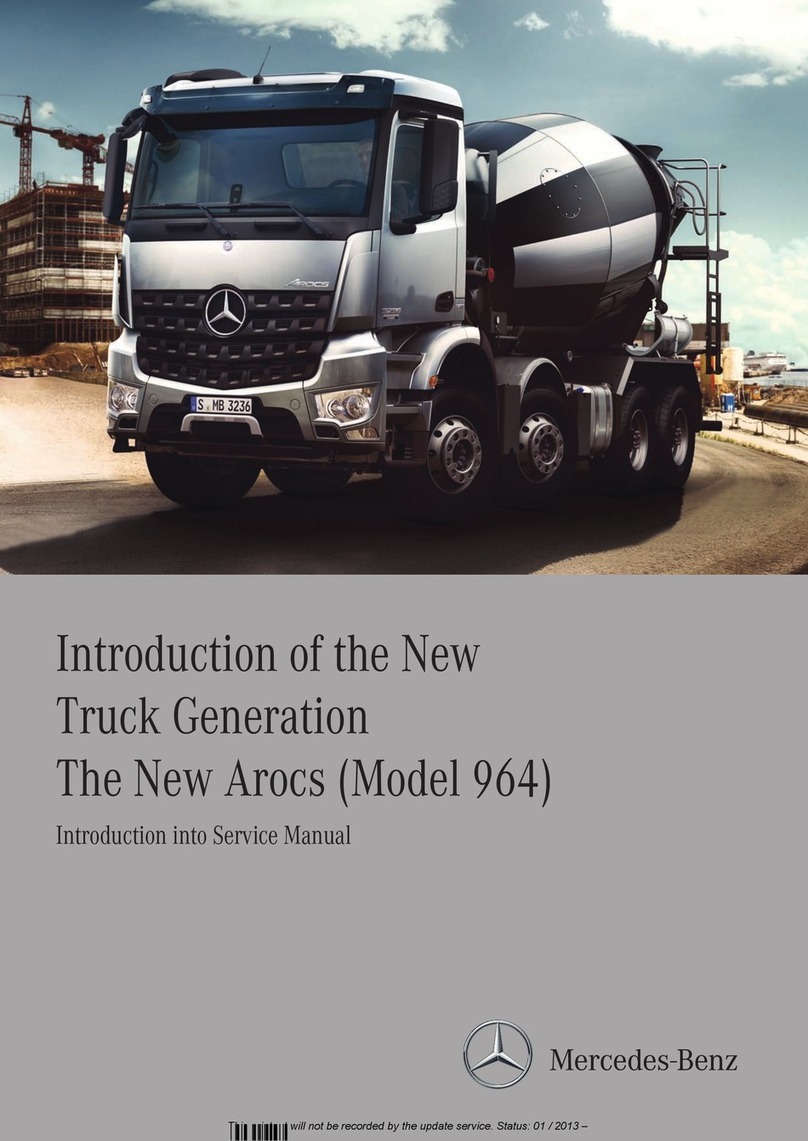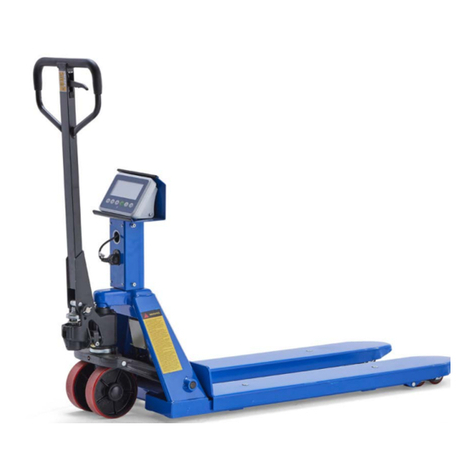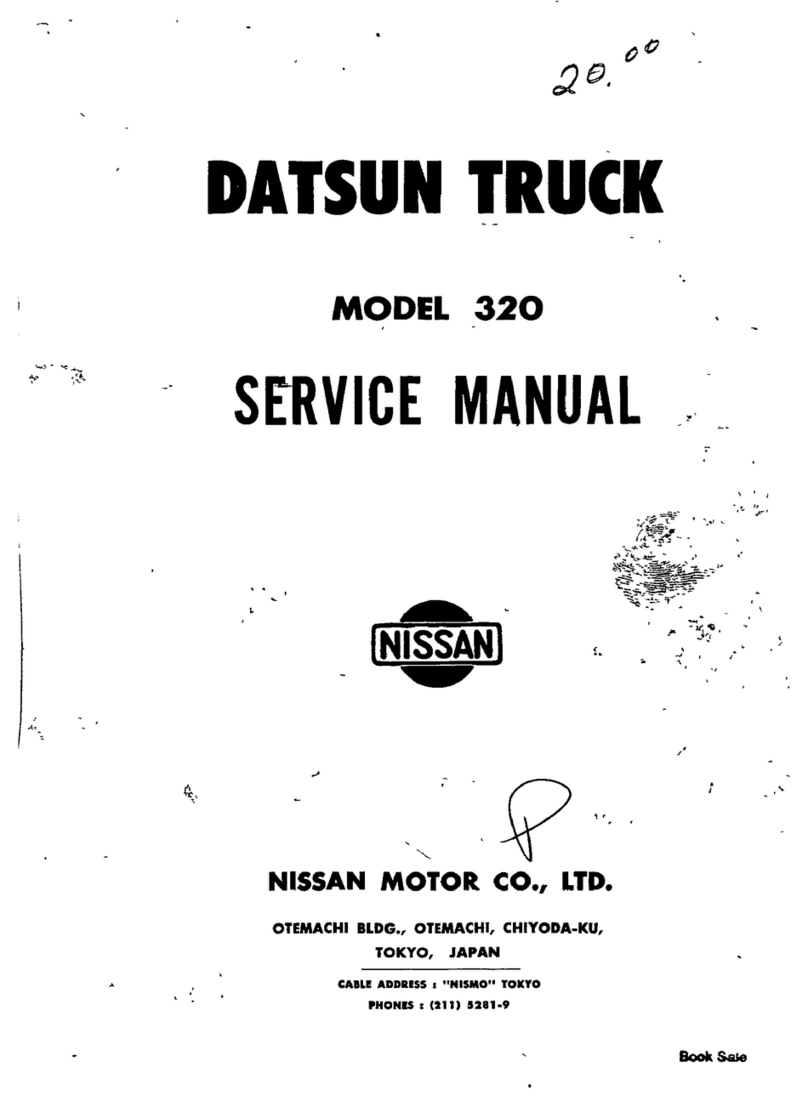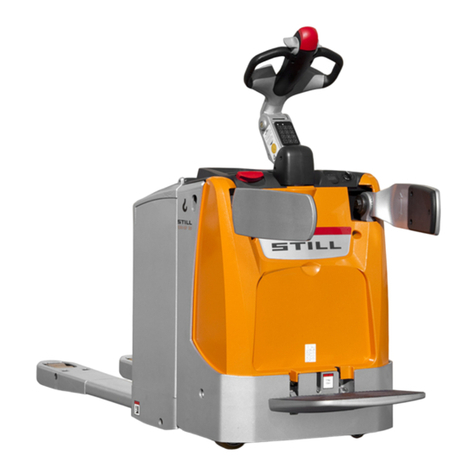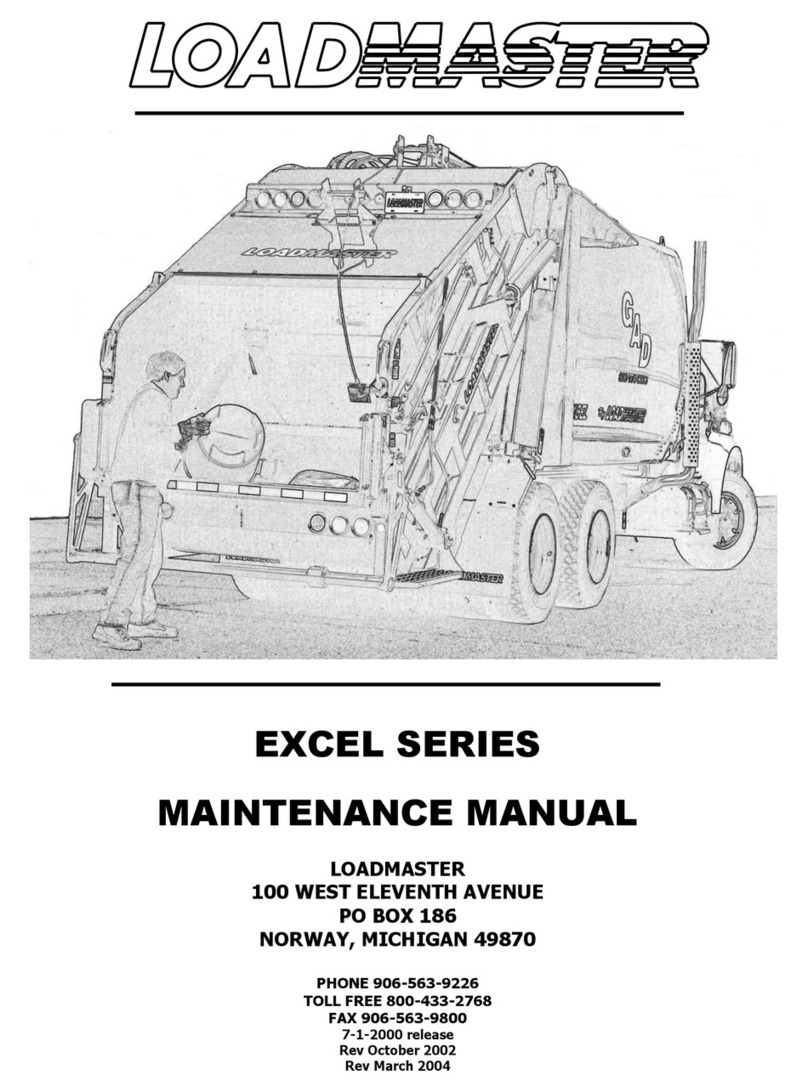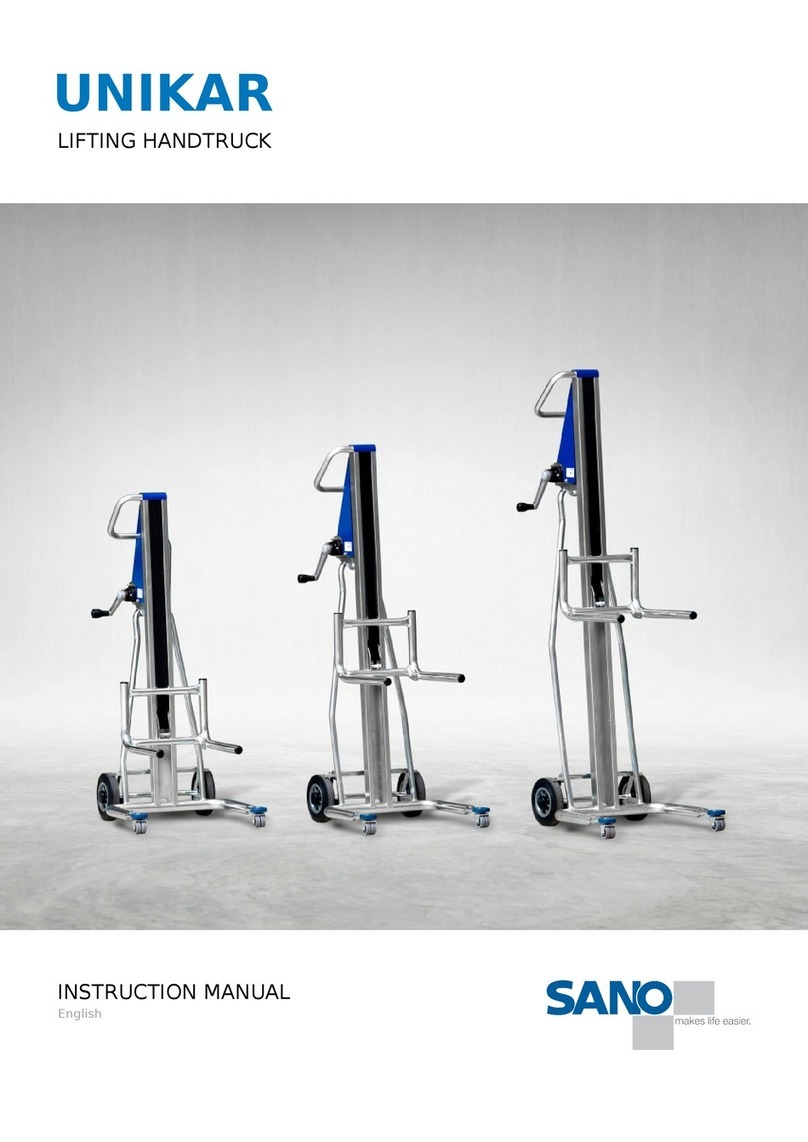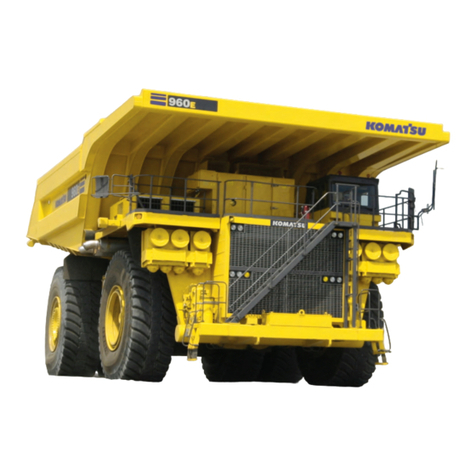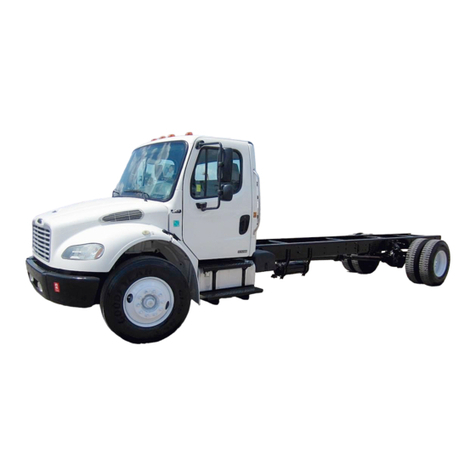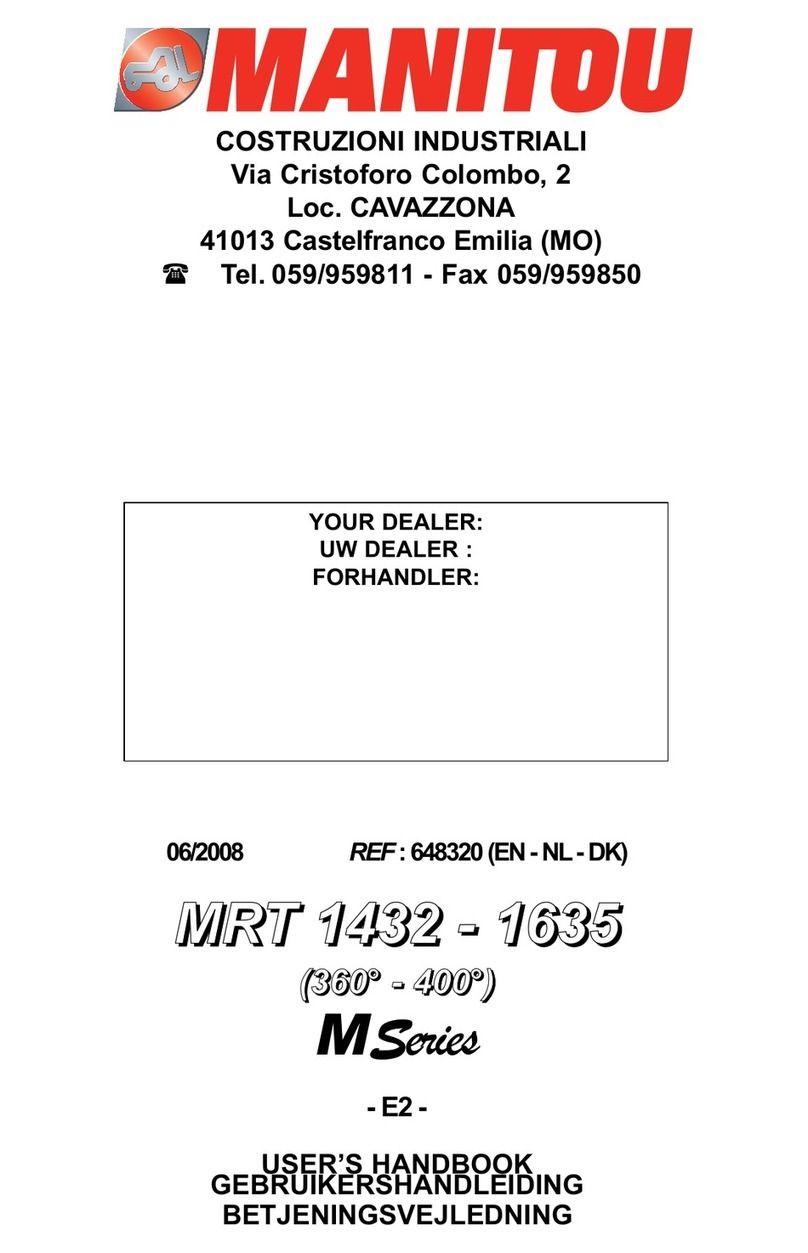Mitsubishi Fuso CANTER User guide

TOYO CF10163 DIC F101
BLACK TOYO CF10163 (20%)
Pub. No. MH996508
Owner’s Handbook
Pub. No. MH996508
’11-3
Owner’s Handbook
MARCH 2011

Foreword
Thank you for purchasing a Mitsubishi Fuso CANTER.
This Owner’s Handbook explains proper vehicle handling and simple maintenance
practices to ensure that you are able to drive your vehicle safely and comfortably.
As improper use of the vehicle may result in a breakdown or cause an accident, we
urge you to read this handbook thoroughly before operating the vehicle.
Periodical lubrication and maintenance are essential to obtain maximum perfor-
mance and extended service life from your vehicle. The separate “Service Booklet”
contains a periodical maintenance schedule. You are strongly recommended to per-
form the lubrication and maintenance as specified in the schedule.
© 2011 Mitsubishi Fuso Truck & Bus Corporation Printed in Japan

Reading the handbook
QPlease be acquainted with the model name and other specifics of your vehicle so that you
will be able to read the applicable descriptions that are identified by vehicle type, model or
engine model in this handbook.
QBecause of differences in specifications and improvements that may be added after prep-
aration of this manual, some of the explanations and illustrations in this handbook may
not apply to your vehicle.
QThe following symbols are used throughout this handbook:
: requests that reader should refer to the page of the number indicated.
QThis manual contains important cautionary instructions and supplementary information
under the following four headings which identify the nature of the instructions and infor-
mation:
DANGER Precautions that should be taken in handling potentially
dangerous substances such as battery fluid and coolant
additives.
WARNING Precautionary instructions, which, if not observed, could
result in serious injury or death.
CAUTION Precautionary instructions, which, if not observed, could
result in damage to or destruction of equipment or parts.
NOTE: Suggestions or supplementary information for more effi-
cient use of equipment or better understanding.

CONTENTS
1. Recommendation to drivers . . . . . . . . . . . . . . . . . . . . . . . . . . . . . . . . . . . . . . . . . . . 1-1
2. Warning labels . . . . . . . . . . . . . . . . . . . . . . . . . . . . . . . . . . . . . . . . . . . . . . . . . . . . . . 2-1
3. Opening and closing . . . . . . . . . . . . . . . . . . . . . . . . . . . . . . . . . . . . . . . . . . . . . . . . . 3-1
4. Seat and steering wheel adjustments . . . . . . . . . . . . . . . . . . . . . . . . . . . . . . . . . . . 4-1
5. Switches and controls . . . . . . . . . . . . . . . . . . . . . . . . . . . . . . . . . . . . . . . . . . . . . . . . 5-1
6. Instruments and warning lamps . . . . . . . . . . . . . . . . . . . . . . . . . . . . . . . . . . . . . . . . 6-1
7. Starting and driving . . . . . . . . . . . . . . . . . . . . . . . . . . . . . . . . . . . . . . . . . . . . . . . . . . 7-1
8. Handling special equipment . . . . . . . . . . . . . . . . . . . . . . . . . . . . . . . . . . . . . . . . . . . 8-1
9. Heating and air conditioning . . . . . . . . . . . . . . . . . . . . . . . . . . . . . . . . . . . . . . . . . . . 9-1
10. Interior equipment and accessories . . . . . . . . . . . . . . . . . . . . . . . . . . . . . . . . . . . . 10-1
11. In cold weather . . . . . . . . . . . . . . . . . . . . . . . . . . . . . . . . . . . . . . . . . . . . . . . . . . . . . 11-1
12. Simple inspection and service . . . . . . . . . . . . . . . . . . . . . . . . . . . . . . . . . . . . . . . . 12-1
13. Useful advices for emergencies . . . . . . . . . . . . . . . . . . . . . . . . . . . . . . . . . . . . . . . 13-1
14. Service data . . . . . . . . . . . . . . . . . . . . . . . . . . . . . . . . . . . . . . . . . . . . . . . . . . . . . . . 14-1
15. Alphabetical index . . . . . . . . . . . . . . . . . . . . . . . . . . . . . . . . . . . . . . . . . . . . . . . . . . 15-1
Each chapter has a table of contents on its first page.

1-1
Chassis number and engine number ................................................................................. 1-2
Nameplate .......................................................................................................................... 1-3
Maintenance ...................................................................................................................... 1-4
MITSUBISHI genuine parts and recommended lubricants/hydraulic fluids ....................... 1-5
Fuels .................................................................................................................................. 1-6
AdBlue®............................................................................................................................. 1-8
Handling of the new vehicle ............................................................................................. 1-12
Preventing problems and accidents ................................................................................. 1-13
When servicing the vehicles with 12-volt and 24-volt power circuits ............................... 1-17
Driving in foreign countries .............................................................................................. 1-18
1. Recommendation to drivers

1-2 Recommendation to drivers
If presented at the time of repair or parts order, the
chassis number and engine number will facilitate
the quick and smooth processing of your requests.
The indicated information varies depending on the
country.
<Type 1>
1 Vehicle identification number (V.I.N.)
The vehicle identification number is indicated on the
left frame , near the front wheel.
2 Engine number
The engine number is indicated on the front side
of the cylinder head.
<Type 2>
1 Chassis number
The chassis number is indicated on the left frame
, near the left front wheel.
Chassis number and engine number
Z21444
Example: JLAFEC91G0K
Vehicle model
Chassis
number
Example: 4P10 -
Engine number
Engine model
Example: FEC91E -
Vehicle model
Chassis number

1-3
2 Engine number
The engine number is indicated on the front side
of the cylinder head.
<Type 1>
The nameplate which contains vehicle model num-
ber and the like is attached to the assistant driver’s
side door opening.
<Type 2>
These two plates are attached in the cab under the
rear window or, on Crew-cab models, at the right
side under the rear seat. The compliance plate cer-
tifies that your vehicle complied with Australian
Design Rules at the time of manufacture. In all cor-
respondence related to your vehicle the following
information should be quoted.
•The engine number.
•The vehicle identification number (V.I.N.) –
shown on compliance plate.
•The S.O.A. No. (where applicable), option code,
paint and trim codes located on data plate.
Nameplate
Example: 4P10 -
Engine number
Engine model
Z21948

1-4 Recommendation to drivers
Checking your vehicle at regular intervals is very
important for maximizing performance and extend-
ing service life. It is recommended that you make a
habit of performing the following inspections.
1 New vehicle inspection
After you have driven the first 2,000 km, your vehi-
cle requires a special inspection and adjustments to
compensate for the initial settlement of various
parts. When these distances have been reached,
have your vehicle inspected by your nearest autho-
rized MITSUBISHI FUSO distributor or dealer by
showing them the separate “Service Booklet”.
2 Pre-operational check
Make a habit of checking your vehicle at the start of
every day’s operation. This will ensure safe and
comfortable operation. P. 12-13
3 Periodic inspection
•Periodic inspection is based on either the dis-
tance traveled (odometer reading) or period of
use (months/years).
Always have the recommended inspections and
services performed as scheduled in accordance
with the separate “Service Booklet”.
•Mitsubishi Fuso gives a list of parts (brake
hoses, fuel hoses, oil seals in brake related
components, etc.) that should be replaced at
regular intervals in order to ensure safe opera-
tion.
Though they have a direct bearing on safe vehi-
cle operation, it is difficult to detect deterioration
of these parts through ordinary inspections.
Rubber hoses, either for the brake system or the
fuel system, in particular should be regularly
inspected and serviced. Since they are liable to
swell, chafe or crack over time, it is necessary
that they be inspected by technicians according
to the “Periodic inspection schedule” section,
and that they be replaced at regular intervals for
safety’s sake. The hoses must be replaced
immediately whenever they are worn or broken.
For further details, refer to the separate “Service
Booklet”.
Maintenance
Z22478
Z16328

1-5
4 Rust and corrosion on vehicle
•Rust and corrosion of the undercarriage or
underbody of the vehicle could cause an unex-
pected failure and even lead to an accident.
They may develop rapidly especially on vehicles
that are left unused for long periods, driven on
coastal roads or roads on which road chemicals
have been applied, or on vehicles used to trans-
port marine products.
•Wash off road chemicals and other contamina-
tion thoroughly to ensure long life and reliable
operation of your vehicle. It is also important to
have your vehicle inspected each year for rust
and corrosion and touch-up paint as necessary.
•A high-quality rust preventive coating is recom-
mended if your vehicle is used under harsh con-
ditions (e.g. frequently transporting fresh fish,
lime, etc. or driving on roads where chemicals
have been applied). Please contact an autho-
rized MITSUBISHI FUSO distributor or dealer
for details of high-quality rust preventive coating.
1 MITSUBISHI genuine parts
Always use only MITSUBISHI FUSO/MITSUBISHI
MOTORS genuine parts as replacements both to
ensure safety and to obtain maximum performance
from your vehicle.
MITSUBISHI genuine parts are identical to the parts
used during the production of MITSUBISHI FUSO/
MITSUBISHI MOTORS vehicle. All parts undergo
the most stringent quality control and their quality is
guaranteed by Mitsubishi Fuso Truck & Bus Corpo-
ration. All MITSUBISHI FUSO/MITSUBISHI
MOTORS genuine parts are identified by the mark
shown. They are available from your nearest autho-
rized MITSUBISHI FUSO distributor or dealer.
2 Recommended lubricants/hydraulic flu-
ids
The use of proper oil, grease and hydraulic fluid is
imperative to obtain the maximum performance that
was built into your vehicle. Use only lubricants and
hydraulic fluids that conform to the standards and
grades of our recommendation. The recommended
lubricants and hydraulic fluids are listed in the “Ser-
vice data” section. P. 14-3
MITSUBISHI genuine parts and recom-
mended lubricants/hydraulic fluids
Z10153

1-6 Recommendation to drivers
CAUTION
Our warranty may not cover problems or acci-
dents arising from use of parts other than
MITSUBISHI genuine parts or lubricants/hydrau-
lic fluids of unrecommended standards and
grades.
NOTE:
Special lubricants/hydraulic fluids must be used in
cold regions where the ambient temperature could
drop below –25°C.
For details, consult your nearest authorized MITSU-
BISHI FUSO distributor or dealer.
1 Fuels
•Be sure to use diesel fuel that complies with the
diesel fuel standard “EN590” specified by the
Committee European de Normalization (CEN).
•In cold regions, use diesel fuel with properties
appropriate for the temperature predominant in
the area.
•Avoid storing your vehicle for a long time with
bio-diesel fuel in the fuel tank.
CAUTION
•Never use an alternative fuel or a mixture of
diesel fuel and kerosene. Such fuel has infe-
rior lubricating properties. Using it would
cause a malfunction.
•Never add any antifreezing agent or other
additive to the fuel, as a damaged fuel injec-
tion system could result.
Fuels
WARNING
•Never use a mixture of diesel fuel with
gasoline or alcohol or any fuel other than
proper diesel fuel. Using other fuel could
cause a fire or an explosion. If you acci-
dentally use gasoline or alcohol when
refueling the vehicle, remove all of it from
the fuel system.
•The engine must be stopped when refuel-
ing. Never fail to put out your cigarette
before refueling if you are smoking.

1-7
•If the fuel tank breather (air hole) become so
dirty that the breather gets blocked, the fuel
tank may deform and the fuel injection sys-
tem may fail. Be sure to clean them regularly.
NOTE:
If the vehicle runs out of fuel, air will enter the fuel
system. Simply refueling the vehicle will not make
the engine startable; the air must be bled out of the
fuel system. P. 1 3 - 3 6
2 Refueling your vehicle
CAUTION
•Be careful not to allow dirt to enter the fuel
tank when you refuel the vehicle.
•Tighten the cap firmly after refueling.
1. Open the cover .
2. Insert the starter key into the lock and turn the
key counterclockwise.
3. Remove the cap by rotating it in the direction
of the arrow marked on it (counterclockwise).
Refit the cap by reversing these steps. Tighten it
firmly.
Fuel tank capacity
Type 1 70 liters
Type 2 100 liters
Z20975

1-8 Recommendation to drivers
<Vehicles with a BlueTec®system>
AdBlue®is injected into the exhaust gas inside the
muffler in order to break down NOx (oxides of nitro-
gen) in the exhaust gas into water and nitrogen, and
thus reduces the amount of NOx. P. 5-73
AdBlue®: Registered trademark of the Verband der
Automobilindustrie e.V. (VDA)
AdBlue®
WARNING
AdBlue®is a colorless, transparent, odorless
and harmless water solution (urea 32.5%,
water 67.5%; Freezing temperature –11°C), so
no problem will occur if you get it on your
skin. However, some persons with delicate
skin may in very rare cases get a rash, so
carry out the following procedure.
•If AdBlue®gets on your skin, wash it off
with water. If there is any change in your
skin or it is painful, promptly see a doctor
to receive treatment.
•In the event that you accidentally ingest
AdBlue®, drink one to two cupfuls of water
or milk, and promptly see a doctor to
receive treatment.
•If AdBlue®gets into your eyes, immedi-
ately wash your eyes with a copious
amount of water, then see a doctor to
receive treatment.

1-9
1AdBlue
®used
Be sure to use AdBlue®that conforms to ISO
22241.
ISO: International Organization for Standardization.
CAUTION
Do not carry out the following when using
AdBlue®because this may cause damage to the
BlueTec®exhaust gas aftertreatment. The
warning lamp will light to warn you if you fail to
observe this precaution.
•Do not dilute the AdBlue®.
•Do not mix the AdBlue®with another
reagent.
•Do not use AdBlue®that does not confirm to
ISO 22241.
•Using a fluid other than the specified
AdBlue®or driving a vehicle in a condition
such that AdBlue®is intentionally not con-
sumed constitutes a serious breach of the
law.
2 Replenishing AdBlue®
CAUTION
Do not rest your foot on the urea tank or step on
it, because this may damage the tank and/or the
sensors on it.
NOTE:
•Replenish the AdBlue®well before it is used up.
•It is recommended that you obtain portable
AdBlue®for use in the event that the urea tank
becomes empty.
WARNING
Do not pour anything other than AdBlue®
into the urea tank. Particularly, never pour
diesel fuel or gasoline into the urea tank,
because this may cause a fire or damage the
BlueTec®exhaust gas aftertreatment.
If you accidentally fill the urea tank with any
fluid other than AdBlue®, immediately turn
the starter switch to the “LOCK” position,
and contact an authorized MITSUBISHI FUSO
distributor or dealer to have the incorrectly
added fluid drained off and the vehicle
inspected.
Z20976

1-10 Recommendation to drivers
•You can obtain AdBlue®from an authorized
MITSUBISHI FUSO distributor or dealer.
1. Turn the starter switch to the “LOCK” position to
stop the engine.
2. Wipe away dirt, mud, or other contamination in
the vicinity of the replenishment port.
3. Turn the cap counterclockwise and remove it.
4. While observing the level gauge , replenish
the AdBlue®to the FULL line on the tank.
CAUTION
•Do not use a steel container to hold
AdBlue®. AdBlue®reacts with steel and pro-
duces a corrosive material. If the tank is
refilled with AdBlue®containing this corro-
sive material, the BlueTec®exhaust gas
aftertreatment will be damaged.
•Containers and appliances used to handle
AdBlue®must not have been used for other
purposes. Impurities that may remain in
them could adversely affect the quality of
AdBlue®and prevent the engine from start-
ing.
5. Install the cap securely by turning it clockwise.
NOTE:
If you spill the AdBlue®during replenishment, wipe
it away with a cloth, or the like, and then wash the
area with water.
NOTE:
•When the urea tank is empty, the warning
lamp flashes, the indication (red) is dis-
played on the multi-information display, and the
engine power is restricted.
After refilling an empty urea tank with AdBlue®,
the warning lamp may flash for a while and
the indication (red) may be displayed on the
multi-information display for a while when you
turn the starter switch to “ON”. The lamp and
indication will then go out.
•When the urea tank becomes empty in cold
weather, be sure to check that the above indica-
tion goes out before parking the vehicle for a
long period.
Urea tank capacity 12 liters
Z20977

1-11
3 Storing the AdBlue®
•Seal the container, and store it indoors in a well-
ventilated place away from direct sunlight. The
temperature of the storage place should be
between –5°C and 25°C.
NOTE:
•You can use frozen AdBlue®after allowing it to
thaw, without loss of quality.
•If you seal the container so as to prevent the
water from evaporating, the quality of the
AdBlue®will not change.
•Although AdBlue®is a non-flammable liquid, it
may emit a pungent odor if it is heated due to a
fire, for example. In the event that a fire breaks
out, promptly move the container to a safe
place.
•It is strongly recommended to store or carry
AdBlue®in the original container in which it was
sold. If unavoidable, you can also use a polypro-
pylene tank usually used for drinking water or
the like instead, after thoroughly cleaning the
inside with AdBlue®and making sure that it con-
tains absolutely no water or other impurities.
CAUTION
Do not store AdBlue®in a non-specified con-
tainer. If AdBlue®is stored in a steel container
and then used for replenishing, corrosive mate-
rial produced by chemical reactions will damage
the BlueTec®exhaust gas aftertreatment.
•AdBlue®must be handled as industrial waste
when discarding it.
WARNING
Do not store AdBlue®in a high temperature
location.
If the temperature is high, AdBlue®may
release ammonia, which is toxic. When stor-
ing the container, seal it. Also, open it out-
doors in a well-ventilated area. If a pungent
odor is emitted from the container, do not
carelessly go near it.

1-12 Recommendation to drivers
CAUTION
Do not discard AdBlue®in a lake or marsh, in
the sea, or in a river because this may cause
environmental destruction.
The way the vehicle is handled when new greatly
affects its subsequent performance and service life.
Observe the following precautions when handling
the new vehicle.
1 Maintenance
The “new vehicle inspection” is very important for
extending the service life of your vehicle. We
strongly recommend that this inspection be per-
formed by your nearest authorized MITSUBISHI
FUSO distributor or dealer according to the sched-
ule specified in the “NEW VEHICLE INSPECTION
coupon” included in the separate “Service Booklet”.
2 Maximum engine speed during run-in
period
To avoid overburdening a new engine, limit engine
RPM to that indicated below for the first 1,000 km.
Then, run in your vehicle step by step at various
speeds, beginning with low gears.
Handling of the new vehicle
Engine RPMs during run-in period
2,800 rpm
Z16324

1-13
•Replace oils at regular intervals. Prolonged use
of contaminated oil may cause bearing seizure
or other major problems. Use only the oil and
grease recommended in this manual. Use of
any other oil and grease could cause malfunc-
tions and other problems.
•Replace or clean filters or filter elements at reg-
ular intervals. Clogged or damaged filters or fil-
ter elements could diminish performance or
cause engine malfunction.
•Never turn over the starter continuously for
more than 15 seconds. Doing so could result in
rundown battery or burnt out starter.
•With a manual transmission vehicle, engage the
clutch slowly when starting out. Engaging the
clutch too quickly could shorten the life of the
power train.
•With a manual transmission vehicle, never drive
with your foot on the clutch pedal. Such a prac-
tice will result not only in loss of power but also
in shortened life of the clutch disc due to prema-
ture wear.
•When driving on rough roads, reduce speed suf-
ficiently and avoid bumps and potholes as far as
possible.
•Do not continue spinning the wheels after trac-
tion is lost. Put a rag or some other object under
the tires to give sufficient traction to move for-
ward.
•While the vehicle is in motion, do not try to dis-
engage the clutch or shift the gear into neutral
(manual transmission vehicles) or do not push
the gearshift lever into the “N” position (vehicles
with a DUONIC system). Also, never operate
the vehicle with engine switched off.
•If strange noises, smells or vibrations are noted,
stop as soon as it is safe to do so and check the
vehicle for possible causes.
Preventing problems and accidents
WARNING
Stopping the engine while the vehicle is mov-
ing is extremely dangerous because it drasti-
cally reduces braking performance and
makes the steering action extremely heavy.
Z01369

1-14 Recommendation to drivers
•On climbing or descending slopes, be cautious
of engine overrevving which may occur upon
downshifting or when the vehicle speed is
excessive.
•Try to take maximum advantage of engine brak-
ing and exhaust brake features when descend-
ing a slope.
•If a warning lamp or warning indication comes
on, stop the vehicle in the nearest safe place
and investigate the cause. P. 6-27
•During cold weather, be sure to use oil of a
proper viscosity for the outside temperature.
Also check for proper coolant and windshield
washer fluid additive concentration, battery elec-
trolyte specific gravity, etc.
•Do not carry containers of fuel or spray cans in
the cabin.
•Do not attach any decorative panel or similar
item to the windshield.
•Do not exceed the maximum loading capacity.
Overloading puts excessive stress on vehicle
parts, shortening their service life. Also, avoid
loading the vehicle improperly. Improperly
loaded cargo not only is unstable but also may
result in uneven weight distribution which could
damage the cargo deck and frame.
WARNING
Carrying fuel in the cabin is extremely dan-
gerous because an increase in the cabin tem-
perature could cause fuel vapor to catch fire
or cause the container to rupture.
WARNING
Attaching a decorative panel or similar item
to the windshield could impede driving and
visibility. In addition, any suction cup on
such an item could cause a fire by acting as a
lens.

1-15
•Do not try to forcefully turn the steering wheel
when the front wheels are stuck against a curb-
stone or other object. Doing so could cause the
steering gearbox to fail.
•Do not keep the steering wheel turned fully to
either side for more than 10 seconds. Doing so
could cause the power steering system to mal-
function.
•Never attempt to tune the engine yourself.
The engine has been optimally tuned before
shipment from the factory. Improper adjustments
not only hurt engine performance, but also
worsen exhaust emissions and increase
exhaust noise.
•The vehicle uses electronic devices which are
sufficiently protected against radio wave inter-
ference. However, you should consult your near-
est authorized MITSUBISHI FUSO distributor or
dealer if you wish to install radio transmitting
equipment or other strong radio wave generat-
ing devices since they could adversely affect the
performance of the vehicle’s electronic equip-
ment.
NOTE:
The power supply of your vehicle is rated 12-volts.
Use a 12-volt radio equipment.
•Do not attempt to install electrical wiring your-
self. Instead have it done by your nearest autho-
rized MITSUBISHI FUSO distributor or dealer.
WARNING
•When roping up cargo or covering it with a
trap, make sure that neither the rope nor
the end of the trap hang down between the
cab and the cargo deck as a loosely hang-
ing rope or trap could catch fire from the
engine heat.
•Avoid placing wooden boards or the like in
the gap between the cargo deck and
frame; the heat of the exhaust pipe could
set them on fire.
•When spreading the trap, take care not to
let it cover or be drawn into the engine air
intake duct.
•When loading heavy cargo, take adequate
measures to stop it from slipping. Also
use wire to secure it.

1-16 Recommendation to drivers
•If a lifting magnet is used to unload cargo, its
magnetism may cause sensors to malfunction. If
the vehicle is to be used in a special environ-
ment, please consult the nearest authorized
MITSUBISHI FUSO distributor or dealer.
•When installing a roof deck, drag foiler or other
equipment on the cab roof, use the holes pro-
vided in the roof for that purpose. The installed
equipment including the luggage on it must be
less than 50 kg in weight.
The bolts (M8 x 1.25), washers, rubber packings
and other parts used for installing the equipment
must be of the specified material.
After installation, the periphery of the bolts
should be completely sealed with a sealant.
For further information, please contact your
nearest authorized MITSUBISHI FUSO distribu-
tor or dealer.
•Do not attempt to modify the vehicle. The vehi-
cle’s performance and functionality could deteri-
orate, and newly fitted parts may not comply
with legal regulations. If you wish to fit any
accessory, please consult the nearest autho-
rized MITSUBISHI FUSO distributor or dealer.
WARNING
If wiring is improperly installed upon install-
ing some separately purchased electric
device, originally installed equipment may
malfunction and could possibly cause a fire
due to overheating of the electrical circuit.
Z01850
Table of contents
Other Mitsubishi Fuso Truck manuals
